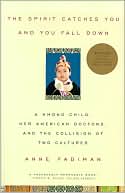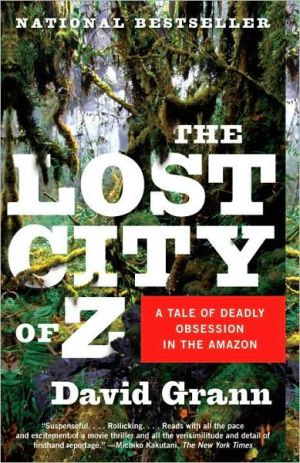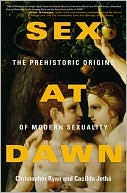The Humans Who Went Extinct: Why Neanderthals Died Out and We Survived
Hailed by Dan Agin in The Huffington Post as "fascinating...electrifying...an apocalyptic vision that puts a chill down one's back," this provocative book offers a new perspective on the extinction of the Neanderthals. Today, we think of Neanderthals as crude and clumsy, easily driven to extinction by the lithe, smart humans who came out of Africa some 100,000 years ago. But Clive Finlayson reminds us that the Neanderthals were another kind of human, and their culture was not so very...
Search in google:
Just 28,000 years ago, the blink of an eye in geological time, the last of Neanderthals died out in their last outpost, in caves near Gibraltar. Thanks to cartoons and folk accounts we have a distorted view of these other humans - for that is what they were. We think of them as crude and clumsy and not very bright, easily driven to extinction by the lithe, smart modern humans that came out of Africa some 100,000 years ago.But was it really as simple as that? Clive Finlayson reminds us that the Neanderthals were another kind of human, and their culture was not so very different from that of our own ancestors. In this book, he presents a wider view of the events that led to the migration of the moderns into Europe, what might have happened during the contact of the two populations, and what finally drove the Neanderthals to extinction. It is a view that considers climate, ecology, and migrations of populations, as well as culture and interaction.His conclusion is that the destiny of the Neanderthals and the Moderns was sealed by ecological factors and contingencies. It was a matter of luck that we survived and spread while the Neanderthals dwindled and perished. Had the climate not changed in our favour some 50 million years ago, things would have been very different.There is much current research interest in Neanderthals, much of it driven by attempts to map some of their DNA. But it's not just a question of studying the DNA. The rise and fall of populations is profoundly moulded by the larger scale forces of climate and ecology. And it is only by taking this wider view that we can fully understand the course of events that led to our survival and their demise. The fact that Neanderthals survived until virtually yesterday makes our relationship with them and their tragedy even more poignant. They almost made it, after all. Publishers Weekly A cave on Gibraltar 28,000 years ago was one of the final homes of the Neanderthals. Finlayson, director of the Gibraltar Museum, uses his knowledge of that cave and others like it to explore the differences and similarities between modern humans and Neanderthals, and how the differences led to our surviving them. Presenting a host of data, he draws a single conclusion: modern humans weren't brighter, stronger or more capable than Neanderthals. Rather, we were luckier. Scattered around Europe, Neanderthals probably succumbed to various factors, from disease to drastic climate change—changes that led to an environment more friendly to Homo sapiens. Finlayson does a superb job of describing the factors behind the expansion of the genus Homo and its diversification into various species, of which only Homo sapiens survives today. He also offers a powerful critique of those who theorize differently about the expansion of our species with very little data. Finally, he challenges us to rethink early human migration around the globe, arguing that the pattern we see is simply a modest expansion, generation by generation, as environmental conditions permitted. In his hands the links between climate and evolutionary change are strikingly clear. 5 b&w illus. (Nov.)
List of Illustrations viPreface viiPrologue: When Climate Changed the Course of History 11 The Road to Extinction Is Paved with Good Intentions 222 Once We Were Not Alone 453 Failed Experiments 654 Stick to What You Know Best 815 Being in the Right Place at the Right Time 1036 If Only... 1217 Africa in Europe- A Mediterranean Serengeti 1438 One Small Step for Man... 1569 Forever Opportunists 17610 The Pawn Turned Player 190Epilogue: Children of Chance 206Endnotes 221Index 260
\ Publishers WeeklyA cave on Gibraltar 28,000 years ago was one of the final homes of the Neanderthals. Finlayson, director of the Gibraltar Museum, uses his knowledge of that cave and others like it to explore the differences and similarities between modern humans and Neanderthals, and how the differences led to our surviving them. Presenting a host of data, he draws a single conclusion: modern humans weren't brighter, stronger or more capable than Neanderthals. Rather, we were luckier. Scattered around Europe, Neanderthals probably succumbed to various factors, from disease to drastic climate change—changes that led to an environment more friendly to Homo sapiens. Finlayson does a superb job of describing the factors behind the expansion of the genus Homo and its diversification into various species, of which only Homo sapiens survives today. He also offers a powerful critique of those who theorize differently about the expansion of our species with very little data. Finally, he challenges us to rethink early human migration around the globe, arguing that the pattern we see is simply a modest expansion, generation by generation, as environmental conditions permitted. In his hands the links between climate and evolutionary change are strikingly clear. 5 b&w illus. (Nov.)\ \








